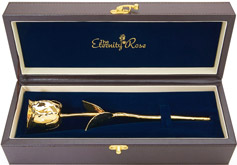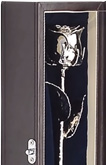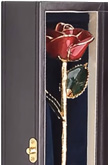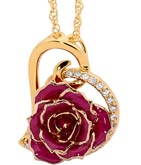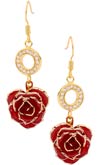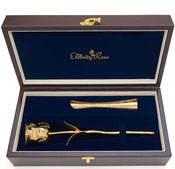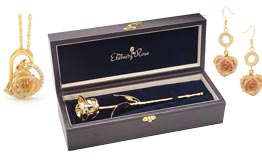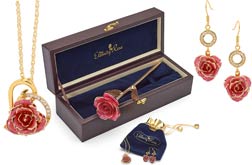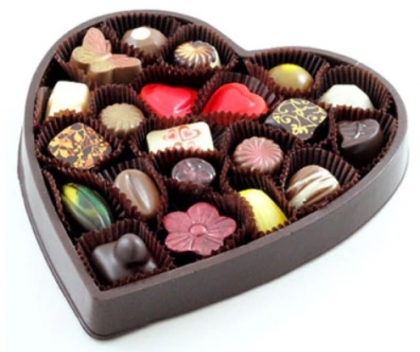The History of How Chocolate Became a Valentine’s Day Gift
Valentine's Day, a celebration of love and affection, has evolved over centuries into a global phenomenon marked by the exchange of gifts, with chocolate reigning supreme as the quintessential symbol of love and sweetness. The journey of chocolate from a luxurious commodity to a popular Valentine's Day gift is a fascinating tale of cultural shifts, marketing genius, and the universal appeal of this delectable treat.
The Origins of Valentine's Day
The tradition of Valentine's Day dates back to ancient Roman times with the festival of Lupercalia, celebrated in mid-February. This pagan festival, which included rituals for fertility and matchmaking, was later Christianized and associated with St. Valentine, a martyr of the early Christian church. The exact origins and identity of St. Valentine remain shrouded in mystery, with several legends attributing different heroic acts of love to him.
As centuries passed, the day gradually transformed into a celebration of romantic love. By the 14th and 15th centuries, it became common in Europe to express love and affection through poems, songs, and letters. This era also witnessed the emergence of the concept of courtly love, where chivalrous acts and romantic gestures were idealized.
The Introduction of Chocolate to Europe
Chocolate, as we know it, began its journey in the New World, primarily among the Aztecs and Mayans who consumed it as a bitter, frothy drink mixed with spices. The Spanish conquistadors brought chocolate back to Europe in the 16th century. Initially, it was a luxury item enjoyed by the elite in the form of a drink, believed to have aphrodisiac properties and medicinal benefits.
Over time, chocolate became more accessible, and by the 19th century, it was widely consumed by people of different social strata. The Industrial Revolution played a pivotal role in this transformation, as technological advancements made it possible to produce chocolate in solid form, which was easier to package and distribute.
The Marriage of Chocolate and Valentine's Day
The association of chocolate with Valentine's Day can be traced back to the Victorian era. During this period, there was a resurgence of interest in Valentine's Day in England, with elaborate cards and gifts exchanged among lovers and friends. It was also a time when the culture of gift-giving and expressing love through material objects was gaining popularity.
Enter Richard Cadbury, a member of the famous Cadbury chocolate manufacturing family in England. In the mid-19th century, Cadbury recognized the potential of combining the romantic appeal of Valentine's Day with the growing popularity of chocolate. He began producing beautifully decorated boxes of chocolates, specifically designed for Valentine's Day. These boxes, adorned with cupids and roses, were not just containers for chocolate but were also treasured as keepsakes.
This innovation marked a significant turning point in the commercialization of Valentine's Day and established chocolate as a popular gift for the occasion. The trend quickly caught on, and other chocolate manufacturers around the world followed suit, creating their own Valentine's Day-themed chocolate products.
The Universal Appeal of Chocolate
The reasons behind the enduring appeal of chocolate as a Valentine's Day gift are manifold. Firstly, chocolate has a sensory appeal that is hard to resist. The taste, texture, and aroma of chocolate can evoke feelings of pleasure and comfort, making it a perfect expression of love and affection.
Secondly, chocolate is versatile. It can be molded into various shapes and combined with a range of flavors, allowing for endless creativity and personalization. From heart-shaped boxes to artisanal truffles, there's a chocolate gift to suit every taste and budget.
Furthermore, chocolate has a symbolic meaning. Along with red roses, it's often associated with love, passion, and indulgence, which aligns perfectly with the sentiments of Valentine's Day. Gifting chocolate is seen as a gesture of sharing something delightful and intimate, enhancing its appeal as a romantic gift.
The Commercialization of Valentine's Day and Chocolate
The commercialization of Valentine's Day has played a significant role in solidifying chocolate's position as a preferred gift. Retailers and marketers have skillfully tapped into the emotional aspects of the holiday, creating campaigns that portray chocolate as an essential element of Valentine's Day celebrations.
This marketing strategy has been incredibly successful, turning Valentine's Day into one of the most profitable times of the year for chocolate manufacturers and retailers. It has also influenced cultural practices worldwide, with many countries adopting the tradition of gifting chocolate on Valentine's Day.
The Evolving Traditions
In recent years, the tradition of gifting chocolate on Valentine's Day has evolved to include more inclusive and diverse expressions of love. It's no longer just about romantic love; people use the occasion to show appreciation for friends, family members, and even colleagues, often through the gift of chocolate.
Moreover, the chocolate industry has seen a shift towards sustainability and ethical sourcing. Consumers are increasingly interested in where their chocolate comes from and how it's made, leading to a rise in the popularity of fair-trade and artisanal chocolates.
Conclusion
Chocolate's ascent to the pinnacle of Valentine's Day gifts is a testament to its universal appeal and the ingenuity of human marketing. It represents not just a treat for the taste buds but also symbolizes love, affection, and the joy of sharing something sweet with someone special. As we continue to celebrate love in all its forms, chocolate remains a timeless and cherished part of Valentine's Day traditions around the world.
This love affair between chocolate and Valentine's Day is a delicious reminder of how traditions evolve and intertwine with our cultural and commercial landscapes, creating enduring symbols that continue to capture our hearts and imaginations.









